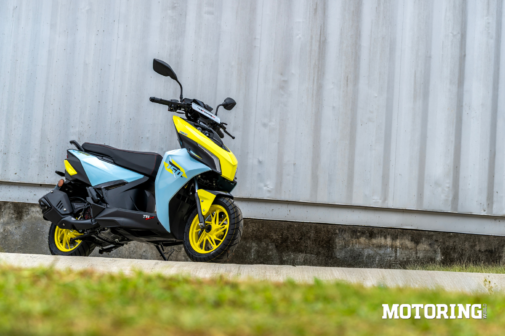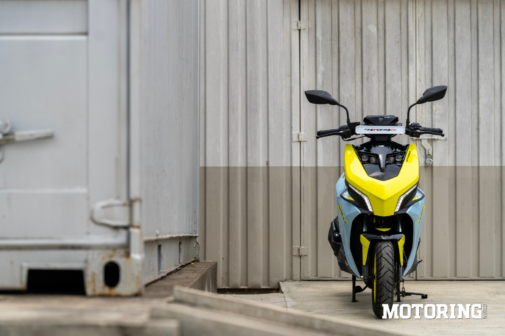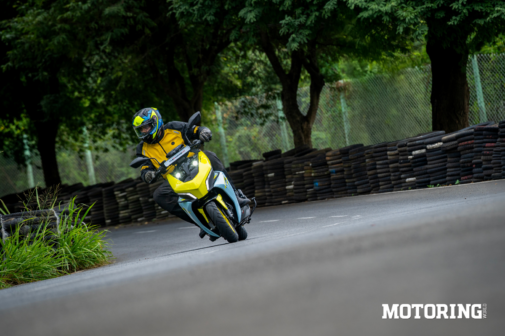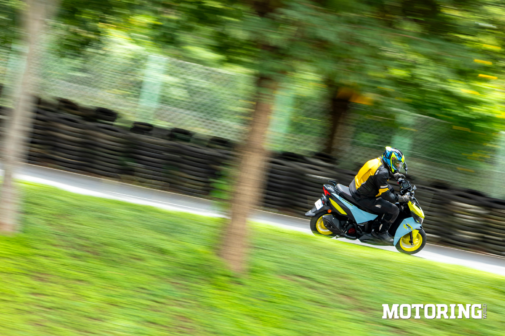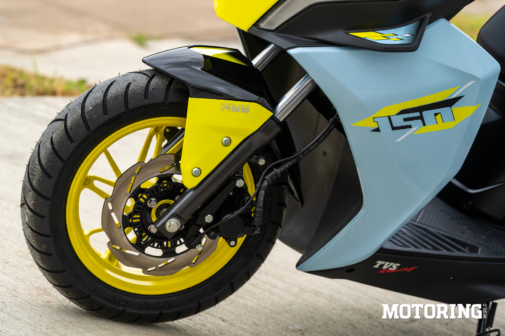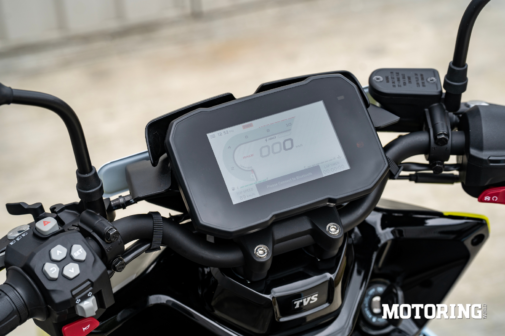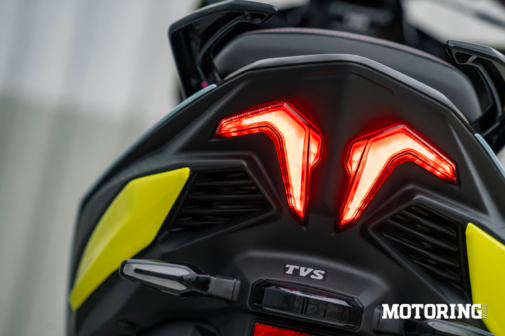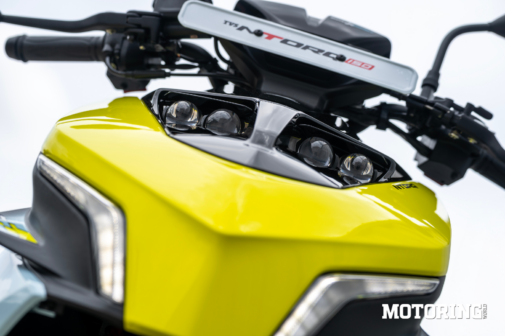You have to read between the lines to get what the TVS Ntorq 150 is really all about. On the face of it, it’s a serious step forward but it holds on to the past far more than you’d think. TVS may be slightly late to the sub-200cc scooter party, of course, but it’s nothing unpardonable. This is a small, even if growing, class and so far, nothing in here can be labelled a runaway success — yet. I suppose that’s what TVS could be gunning for, seeing as the Yamaha Aerox 155, Aprilia SR 160 and Hero Xoom 160 have already shown their hand. So, how has TVS worked out its entry into this ring? Here’s an early giveaway — by doing nothing radical, that’s how. As for the rest, we’re only a few questions away.
IS IT ALL-NEW?
No, not really. The Ntorq 150 feels rather like a continuation of the 125 and that’s no bad thing, seeing how high a bar the 125 has set since 2018. Mechanically and structurally, it’s largely the same as the 125, aside from necessary tweaks to the chassis and suspension with the only major accomplishment being the engine itself, which has been bored and stroked up to arrive at a 149.7cc displacement. As a result, it now produces 13 bhp and 1.4 kgm of torque, up by 3.7 bhp and 0.4 kgm over the 125.
WHY DOES IT LOOK THIS WAY?
Glad you asked. It’s certainly a truer interpretation of the Graphite concept TVS showcased at the 2014 Auto Expo (see what I mean about the past now?) than the 125 was allowed to be. Clearly, a lot has changed since 2017, especially our appetite for machines that look like CGI renders. That front-end, for one, will easily find a lot of new fans, especially given its quad projector headlight set up, even as the tail-end bears a stronger similarity to the 125. It looks properly sporty from every angle, although in certain places, it does appear to be trying too hard to impress — a sign of an old design being pushed to its very limit. At present, it isn’t very clear whether TVS will feel compelled to pass on this design to the 125 (as it did, say, between the Apache RTR 200 and 160) although you and I are free to guess. That said, it’s an exuberant-looking scooter with some cool styling elements of which my favourite is the rider’s interface — a motorcycle–style exposed handlebar and some chunky switchgear to go with it! What I don’t like as much is the rear half of the Ntorq which looks a bit underwhelming in comparison to the front. Also, those 12-inch wheels (painted such a tasty fluorescent yellow) look a bit small for its elaborate proportions, at least from some angles. You’d want to be seen on one, if you’re a college goer.
IS IT FAST?
Of course it is. Do you remember the Apache 150 that TVS launched in 2005? Well, the Ntorq 150 makes almost exactly as much power, and while this may have no scientific bearing, it is also substantially lighter than that Apache. Pointless trivia aside, the Ntorq 150 is a properly fast scooter and among its most noteworthy attributes is the fact that it has a really flat torque curve. What this results in is not just linear acceleration from standstill but also very, very effective roll-on acceleration times. So, whether you’re going from 30 to 50, 40 to 60 or even 60 to 80 kph, you’ll always accelerate with linearity and enthusiasm. At TVS’ slightly limiting test track, and with the Ntorq 150 hauling my enormous weight, I was able to get up to a speedo-indicated 96 kph; with some more room and a lighter rider, I don’t see why 104 kph (TVS’ top-speed claim) should be unattainable.
CAN IT KEEP UP IN THE CORNERS?
It really can but it takes a slightly tricky approach to get there. I’m sure you’re curious as to why TVS has given 14-inch wheels a miss, especially since all of its peers have them, and so was I. So I asked TVS’ R&D team, which justified its decision on the basis of the added agility 12-inch wheels bring to the table. And they do. In a rather bewildering way, the Ntorq 150 is as agile at a crawl as it is towards its top-end. It feels a bit too featherweight-y, in fact, and I can’t say I’m entirely convinced by this outcome. Sure, it’s admirably stable even when tilted over at close to its top speed but, bear in mind, TVS’ Hosur test track isn’t the real world. On the surfaces you and I ride on, which could range from wet to dusty to slippery concrete and paver blocks, I’d imagine this agility may need some skill to interpret. To expect refinement and restraint from 18 year olds — for whom TVS claims the Ntorq 150 is designed — might be a bit much, though.
While I did enjoy the flavour of its 12-inch wheel experience, and I understand that upsizing to 14s may have been too cost and labour intensive, I expected TVS — a manufacturer with such an incredible racing pedigree — to have done something about this. Perhaps, a slight increase in wheelbase, or at least wider tyres? Nope, it’s all the same as on the 125 but, instead, you get traction control and winglets (with a poorly finished decal) that TVS is convinced contributes to high-speed stability. Sigh!
IS IT TECHY?
How could it not be? TVS, in recent years, has gone overboard with its tech indulgences and the Ntorq 150 is no exception to this. As a result, it features a densely-packed TFT screen (the base variant gets a TFT/LCD split-screen), two riding modes (Street/Race), traction control, navigation, Bluetooth connectivity, and even Alexa voice command assist. The controls for all of these features are routed through the switchgear on the LHS pod and it’s all rather intuitive. I struggled to tell the difference between Street and Race mode, to be honest, but perhaps a more patient scrutiny in the real world will reveal the differences. On a slightly off topic note, while those projector headlights look really cool, TVS claims they’re built to car-like standards and I can’t help but believe they’ll be pricey to replace in case of damage, something 18-year olds can find creative ways to inflict.
SHOULD YOU BUY ONE?
Sure! With a price range of Rs 1.19 lakh to Rs 1.29 lakh, the Ntorq 150 is quite aggressively priced and, in fact, a bit temptingly close to the 125, which ranges from Rs 94,327 to Rs 1.11 lakh, ex-showroom. This works well for those of you who are currently trying the ‘I won’t eat until you buy me an Ntorq’ drill with your parents — and, even if you’re older, you’ll love it for its authentic TVS/Ntorq DNA. If you look at it from the perspective of evolution, however, you might feel a bit underwhelmed. I, for one, believe TVS could have dug deeper and produced an Ntorq of a much higher calibre; it has the capability, for sure. This becomes even more crucial when you remember that, unlike in 2018, when the Ntorq 125 had fewer rivals, the 150 is going to be competing with some rather compelling EVs, too.
For the time being, you can look at the Ntorq 150 as a fun, spirited scooter that’s worth nagging your parents for, but I hope TVS won’t take seven more years to come up with its next step-up. This time, just call it the Graphite, please?










